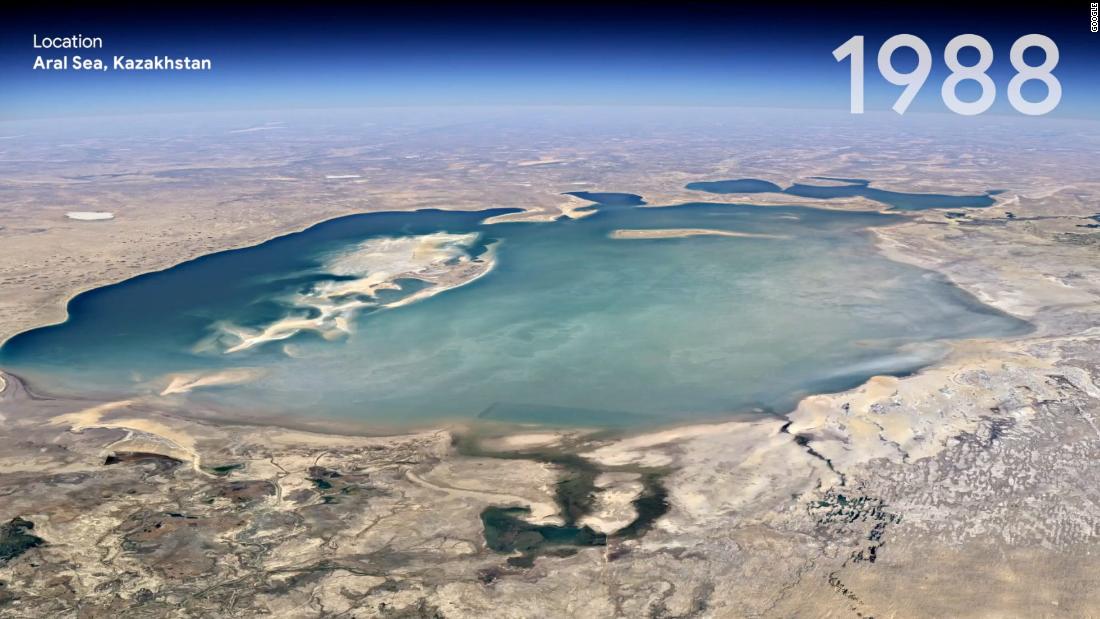
Google's latest feature, Timelapse, is an eye opening, technical feat that provides visual evidence of how the Earth has changed due to climate change and human behavior. The tool takes the platform's static imagery and turns it into a dynamic 4D experience, allowing users to click through timelapses that highlight melting ice caps, receding glaciers, massive urban growth and wildfires' impact on agriculture.
Timelapse compiles 24 million satellite photos taken from 1984 to 2020, an effort Google (GOOG) said took two million processing hours across thousands of machines in Google Cloud. For the project, the company worked with NASA, the United States Geological Survey's Landsat program — the world's longest-running Earth observation program — the European Union's Copernicus program and its Sentinel satellites, and Carnegie Mellon University's CREATE Lab, which helped develop the technology behind Timelapse.
To explore Timelapse in Google Earth, users can type any location into the search bar to see it in motion, whether it's a landmark or the neighborhood in which they grew up. Google said it removed elements such as clouds and shadows from the images, and computed a single pixel for every location on Earth for every year since 1984; ultimatel stitching them together into a timelapse video.
For example, it's possible to see the Cape Cod coast slowly shifting south, agriculture growth in the middle of a desert in Al Jowf, Saudi Arabia, and the development of Songdo beach, a man-made beach in Busan, South Korea.
"Visual evidence can cut to the core of the debate in a way that words cannot and communicate complex issues to everyone," said Rebecca Moore, a director of Google Earth, in a blog post on Thursday.
Google also created various guided tours through Voyager, its storytelling platform, around some of the broader changes seen in the imagery.
The company said it hopes governments, researchers, journalists, teachers and advocates will analyze the imagery, identity trends and share their findings.
"We invite anyone to take Timelapse into their own hands and share it with others — whether you're marveling at changing coastlines, following the growth of megacities, or tracking deforestation," Moore said. "Timelapse in Google Earth is about zooming out to assess the health and well-being of our only home, and is a tool that can educate and inspire action."
Technology - Latest - Google News
April 15, 2021 at 10:54PM
https://ift.tt/3slc9Rh
Google Earth's new Timelapse feature shows chilling effect of climate change - CNN
Technology - Latest - Google News
https://ift.tt/2AaD5dD
Bagikan Berita Ini
















0 Response to "Google Earth's new Timelapse feature shows chilling effect of climate change - CNN"
Post a Comment